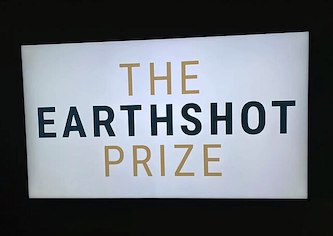Scientists have found that polar bears are in danger of starving because the ice in the Arctic is melting. These bears usually eat seals that they catch on ice floes, but as the ice melts, they are spending more time on land and eating things like bird’s eggs, berries, and grass. Unfortunately, these alternative foods are not enough for the bears to stay healthy, and they are losing weight quickly. The loss of sea ice is the biggest threat to polar bears and their survival.
A recent study in Western Manitoba showed that the time without ice has increased by three weeks between 1979 and 2015. To understand how polar bears are surviving without ice, scientists tracked the activities of 20 bears for three years. The bears had GPS-equipped cameras on their collars, which allowed the scientists to see where they went, what they did, and what they ate. During the summer months without ice, the bears tried different ways to survive, like conserving energy or looking for plants and berries. But none of these strategies worked, and 19 out of 20 bears lost weight.
Dr. Anthony Pagano, the lead author of the study, said that no matter what the bears did, it didn’t help them survive on land. Polar bears can’t adapt to eating plants like other bears can, so their situation is very serious. The study also found that two out of three bears that went into the water found dead animals to eat, but they were too tired to eat for a long time. These findings show that polar bears are having a hard time dealing with climate change.
Although this study focused on one area, scientists think that the effects of climate change on polar bears will be different in other places. It’s likely that polar bears will disappear from areas where the ice is lost in the future, but it’s hard to say when and where this will happen. Some places may still be good for bears for many years. However, if the ice keeps melting like it’s predicted to, the conditions in the study area will become very difficult for bears very soon. This study shows that we need to take action to stop climate change and protect the Arctic.
Original news source: Polar bears face starvation threat as ice melts (BBC)
🎧 Listen:
Slow
Normal
Fast
📖 Vocabulary:
| 1 | starving | Not having enough food to live |
| 2 | floes | Large, flat pieces of ice floating in the sea |
| 3 | alternative | Another option or choice |
| 4 | conserving | Saving or using resources carefully so they last longer |
| 5 | strategies | Plans or methods for achieving a goal |
| 6 | equipped | Provided with the necessary items for a specific purpose |
| 7 | adapt | Change behavior or characteristics to fit a new situation |
| 8 | serious | Extremely important and needing careful consideration or attention |
| 9 | climate | The usual weather in a place over a long period |
| 10 | disappear | To completely go away or become invisible |
| 11 | predicted | Said that something will likely happen in the future |
| 12 | conditions | The specific way a place or situation is at a certain time |
| 13 | action | Doing something to achieve a result |
| 14 | protect | Keep safe from harm or danger |
| 15 | Arctic | The region around the North Pole, consisting of the Arctic Ocean and parts of Canada, Russia, Greenland, and the United States |
Group or Classroom Activities
Warm-up Activities:
– News Summary
Instructions:
1. Divide the class into small groups.
2. Give each group a copy of the article.
3. Instruct the groups to read the article and summarize the main points in 3-4 sentences.
4. Each group will then present their summary to the class.
– Vocabulary Pictionary
Instructions:
1. Write down 10 key vocabulary words from the article on separate pieces of paper.
2. Divide the class into pairs.
3. Give each pair a set of vocabulary words.
4. One student from each pair will choose a word and draw a picture to represent that word, while the other student guesses the word.
5. Set a time limit for each round and have the pairs switch roles after each round.
6. The pair with the most correct guesses wins.
– Sketch It
Instructions:
1. Divide the class into small groups.
2. Give each group a whiteboard or a large piece of paper and markers.
3. Instruct the groups to choose a scene or moment from the article and sketch it on the whiteboard or paper.
4. Each group will then present their sketch to the class and explain the significance of their chosen scene.
– Pros and Cons
Instructions:
1. Divide the class into small groups.
2. Assign each group a specific role: scientists, environmentalists, policymakers, or local communities.
3. Instruct each group to discuss and list the pros and cons of taking action to stop climate change and protect the Arctic from the perspective of their assigned role.
4. After the discussion, each group will present their pros and cons to the class and engage in a debate.
– Opinion Poll
Instructions:
1. Divide the class into pairs or small groups.
2. Give each pair/group a set of statements related to climate change and the protection of the Arctic.
3. Instruct the pairs/groups to discuss each statement and decide whether they agree or disagree.
4. After the discussion, conduct a class poll by having each pair/group share their opinions and tallying the number of agree and disagree responses for each statement.
5. Discuss the results as a class and encourage students to explain their reasoning.
🤔 Comprehension Questions:
1. Why are polar bears in danger of starving?
2. What are some of the alternative foods that polar bears are eating as the ice melts?
3. Why are these alternative foods not enough for the bears to stay healthy?
4. How has the time without ice in Western Manitoba changed between 1979 and 2015?
5. How did scientists track the activities of the polar bears in the study?
6. What strategies did the bears try to survive during the summer months without ice?
7. Why couldn’t the bears adapt to eating plants like other bears?
8. What do scientists think will happen to polar bears in areas where the ice is lost in the future?
Go to answers ⇩
🎧✍️ Listen and Fill in the Gaps:
Scientists have (1)______ that polar bears are in danger of (2)______ because the ice in the Arctic is melting. These bears usually eat (3)______ that they catch on ice floes, but as the ice melts, they are (4)______ more time on land and eating things like bird’s eggs, berries, and grass. Unfortunately, these alternative foods are not enough for the bears to stay healthy, and they are losing weight quickly. The loss of sea ice is the biggest threat to polar bears and their survival.
A recent study in Western Manitoba showed that the time without ice has increased by three weeks between 1979 and 2015. To understand how polar bears are (5)______ without ice, scientists tracked the activities of 20 bears for three years. The bears had GPS-equipped cameras on their collars, which allowed the scientists to see where they went, what they did, and what they ate. During the summer months without ice, the bears (6)______ different ways to survive, like conserving (7)______ or looking for plants and (8)______. But none of these strategies worked, and 19 out of 20 bears lost (9)______.
Dr. Anthony Pagano, the lead author of the study, said that no matter what the bears did, it didn’t help them survive on land. Polar bears can’t (10)______ to eating plants like other bears can, so their situation is very serious. The study also found that two out of three bears that went into the water found dead animals to eat, but they were too tired to eat for a long time. These findings show that polar bears are having a hard time (11)______ with (12)______ change.
Although this study focused on one area, scientists think that the effects of climate change on (13)______ bears will be different in other places. It’s likely that polar bears will disappear from areas where the ice is lost in the future, but it’s hard to say when and where this will happen. Some places may still be good for bears for many (14)______. However, if the ice keeps (15)______ like it’s predicted to, the (16)______ in the study area will become very difficult for bears very soon. This study shows that we need to take action to stop climate change and protect the Arctic.
Go to answers ⇩
💬 Discussion Questions:
Students can ask a partner these questions, or discuss them as a group.
1. What is a polar bear?
2. How would you feel if you were a polar bear and couldn’t find enough food to eat?
3. Do you like studying about animals? Why or why not?
4. Do you think it’s important to protect the Arctic? Why or why not?
5. How do you think climate change affects animals?
6. What do you think can be done to stop climate change?
7. Have you ever seen a polar bear? If so, where and when?
8. How do you think the loss of sea ice affects the polar bear’s ability to hunt?
9. What are some alternative foods that polar bears eat when there is no ice?
10. How do you think the loss of sea ice affects the polar bear’s weight?
11. Do you think it’s fair that polar bears are losing their habitat because of climate change? Why or why not?
12. What do you think would happen if polar bears disappeared from the Arctic?
13. Have you ever seen any effects of climate change in your own country? If so, what were they?
14. How do you think climate change affects other animals besides polar bears?
15. What can individuals do to help protect the Arctic and stop climate change?
Individual Activities
📖💭 Vocabulary Meanings:
Match each word to its meaning.
Words:
1. starving
2. floes
3. alternative
4. conserving
5. strategies
6. equipped
7. adapt
8. serious
9. climate
10. disappear
11. predicted
12. conditions
13. action
14. protect
15. Arctic
Meanings:
(A) Large, flat pieces of ice floating in the sea
(B) Doing something to achieve a result
(C) To completely go away or become invisible
(D) Said that something will likely happen in the future
(E) Saving or using resources carefully so they last longer
(F) Another option or choice
(G) Keep safe from harm or danger
(H) Change behavior or characteristics to fit a new situation
(I) The usual weather in a place over a long period
(J) Extremely important and needing careful consideration or attention
(K) Provided with the necessary items for a specific purpose
(L) The region around the North Pole, consisting of the Arctic Ocean and parts of Canada, Russia, Greenland, and the United States
(M) The specific way a place or situation is at a certain time
(N) Not having enough food to live
(O) Plans or methods for achieving a goal
Go to answers ⇩
🔡 Multiple Choice Questions:
1. What is the biggest threat to polar bears?
(a) Lack of food
(b) Predators
(c) The loss of sea ice
(d) Disease
2. How have polar bears been affected by the melting ice in the Arctic?
(a) They are migrating to colder regions
(b) They are spending more time on land and eating alternative foods
(c) They are hibernating longer to conserve energy
(d) They are becoming more aggressive towards humans
3. What did the recent study in Western Manitoba reveal about the time without ice?
(a) It has decreased significantly over the past few decades
(b) It has remained relatively stable over the years
(c) It varies greatly from year to year
(d) It has increased by three weeks between 1979 and 2015
4. How did scientists track the activities of the polar bears in the study?
(a) They followed the bears on foot
(b) They used GPS-equipped cameras on the bears’ collars
(c) They observed the bears from a distance
(d) They analyzed the bears’ footprints in the snow
5. What did the bears in the study try to do to survive during the summer months without ice?
(a) Hunt for seals on land
(b) Swim longer distances to find food
(c) Hibernate for longer periods of time
(d) Conserve energy and look for plants and berries
6. Why were the alternative foods that the bears ate on land not enough for them to stay healthy?
(a) The bears were unable to digest them properly
(b) The alternative foods were contaminated with toxins
(c) They lacked the necessary nutrients and calories
(d) The bears were not eating enough of them
7. What did the study find about the bears that went into the water?
(a) Two out of three bears found dead animals to eat
(b) All of the bears found plenty of food to eat
(c) The bears were too tired to swim and hunt
(d) The bears were afraid of the water and avoided it
8. What do scientists think will happen to polar bears in areas where the ice is lost in the future?
(a) They will likely disappear from those areas
(b) They will adapt to eating plants and survive
(c) They will migrate to colder regions
(d) They will become more aggressive towards humans
Go to answers ⇩
🕵️ True or False Questions:
1. A recent study in Western Manitoba showed that the time without ice has decreased by three weeks between 1979 and 2015.
2. These alternative foods are not enough for the bears to stay healthy, and they are losing weight quickly.
3. The bears are spending less time on land and continue to primarily eat seals.
4. Polar bears are at risk of starving because the ice in the Arctic is melting.
5. Scientists tracked the activities of 20 bears for three years using GPS-equipped cameras on their collars.
6. Polar bears are thriving despite climate change, and it’s unlikely that they will disappear from areas where the ice is lost in the future.
7. The loss of sea ice is not a significant threat to polar bears and their survival.
8. The bears tried different strategies to survive on land, but none of them were successful, and 19 out of 20 bears lost weight.
Go to answers ⇩
📝 Write a Summary:
Write a summary of this news article in two sentences.
Writing Questions:
Answer the following questions. Write as much as you can for each answer.
1. Why are polar bears in danger of starving?
2. What do polar bears usually eat?
3. What are some alternative foods that polar bears are eating as a result of the melting ice?
4. What did scientists do to track the activities of the polar bears?
5. What did the study find about the bears’ ability to survive on land without ice?
✅ Answers
🤔✅ Comprehension Question Answers:
1. Why are polar bears in danger of starving?
Polar bears are in danger of starving because the ice in the Arctic is melting, which means they have less time to catch seals, their main source of food.
2. What are some of the alternative foods that polar bears are eating as the ice melts?
As the ice melts, polar bears are eating things like bird’s eggs, berries, and grass as alternative foods.
3. Why are these alternative foods not enough for the bears to stay healthy?
These alternative foods are not enough for the bears to stay healthy because they don’t provide the same amount of nutrients and energy as seals do.
4. How has the time without ice in Western Manitoba changed between 1979 and 2015?
The time without ice in Western Manitoba has increased by three weeks between 1979 and 2015.
5. How did scientists track the activities of the polar bears in the study?
Scientists tracked the activities of the polar bears in the study by attaching GPS-equipped cameras to their collars, which allowed them to see where the bears went, what they did, and what they ate.
6. What strategies did the bears try to survive during the summer months without ice?
During the summer months without ice, the bears tried strategies like conserving energy and looking for plants and berries to survive.
7. Why couldn’t the bears adapt to eating plants like other bears?
The bears couldn’t adapt to eating plants like other bears because polar bears have a different digestive system and cannot get enough nutrients from plants alone.
8. What do scientists think will happen to polar bears in areas where the ice is lost in the future?
Scientists think that polar bears will disappear from areas where the ice is lost in the future. However, it is difficult to predict exactly when and where this will happen. Some areas may still be suitable for polar bears for many years, but if the ice continues to melt, conditions will become very difficult for them.
Go back to questions ⇧
🎧✍️✅ Listen and Fill in the Gaps Answers:
(1) found
(2) starving
(3) seals
(4) spending
(5) surviving
(6) tried
(7) energy
(8) berries
(9) weight
(10) adapt
(11) dealing
(12) climate
(13) polar
(14) years
(15) melting
(16) conditions
Go back to questions ⇧
📖💭✅ Vocabulary Meanings Answers:
1. starving
Answer: (N) Not having enough food to live
2. floes
Answer: (A) Large, flat pieces of ice floating in the sea
3. alternative
Answer: (F) Another option or choice
4. conserving
Answer: (E) Saving or using resources carefully so they last longer
5. strategies
Answer: (O) Plans or methods for achieving a goal
6. equipped
Answer: (K) Provided with the necessary items for a specific purpose
7. adapt
Answer: (H) Change behavior or characteristics to fit a new situation
8. serious
Answer: (J) Extremely important and needing careful consideration or attention
9. climate
Answer: (I) The usual weather in a place over a long period
10. disappear
Answer: (C) To completely go away or become invisible
11. predicted
Answer: (D) Said that something will likely happen in the future
12. conditions
Answer: (M) The specific way a place or situation is at a certain time
13. action
Answer: (B) Doing something to achieve a result
14. protect
Answer: (G) Keep safe from harm or danger
15. Arctic
Answer: (L) The region around the North Pole, consisting of the Arctic Ocean and parts of Canada, Russia, Greenland, and the United States
Go back to questions ⇧
🔡✅ Multiple Choice Answers:
1. What is the biggest threat to polar bears?
Answer: (c) The loss of sea ice
2. How have polar bears been affected by the melting ice in the Arctic?
Answer: (b) They are spending more time on land and eating alternative foods
3. What did the recent study in Western Manitoba reveal about the time without ice?
Answer: (d) It has increased by three weeks between 1979 and 2015
4. How did scientists track the activities of the polar bears in the study?
Answer: (b) They used GPS-equipped cameras on the bears’ collars
5. What did the bears in the study try to do to survive during the summer months without ice?
Answer: (d) Conserve energy and look for plants and berries
6. Why were the alternative foods that the bears ate on land not enough for them to stay healthy?
Answer: (c) They lacked the necessary nutrients and calories
7. What did the study find about the bears that went into the water?
Answer: (a) Two out of three bears found dead animals to eat
8. What do scientists think will happen to polar bears in areas where the ice is lost in the future?
Answer: (a) They will likely disappear from those areas
Go back to questions ⇧
🕵️✅ True or False Answers:
1. A recent study in Western Manitoba showed that the time without ice has decreased by three weeks between 1979 and 2015. (Answer: False)
2. These alternative foods are not enough for the bears to stay healthy, and they are losing weight quickly. (Answer: True)
3. The bears are spending less time on land and continue to primarily eat seals. (Answer: False)
4. Polar bears are at risk of starving because the ice in the Arctic is melting. (Answer: True)
5. Scientists tracked the activities of 20 bears for three years using GPS-equipped cameras on their collars. (Answer: True)
6. Polar bears are thriving despite climate change, and it’s unlikely that they will disappear from areas where the ice is lost in the future. (Answer: False)
7. The loss of sea ice is not a significant threat to polar bears and their survival. (Answer: False)
8. The bears tried different strategies to survive on land, but none of them were successful, and 19 out of 20 bears lost weight. (Answer: True)
Go back to questions ⇧












